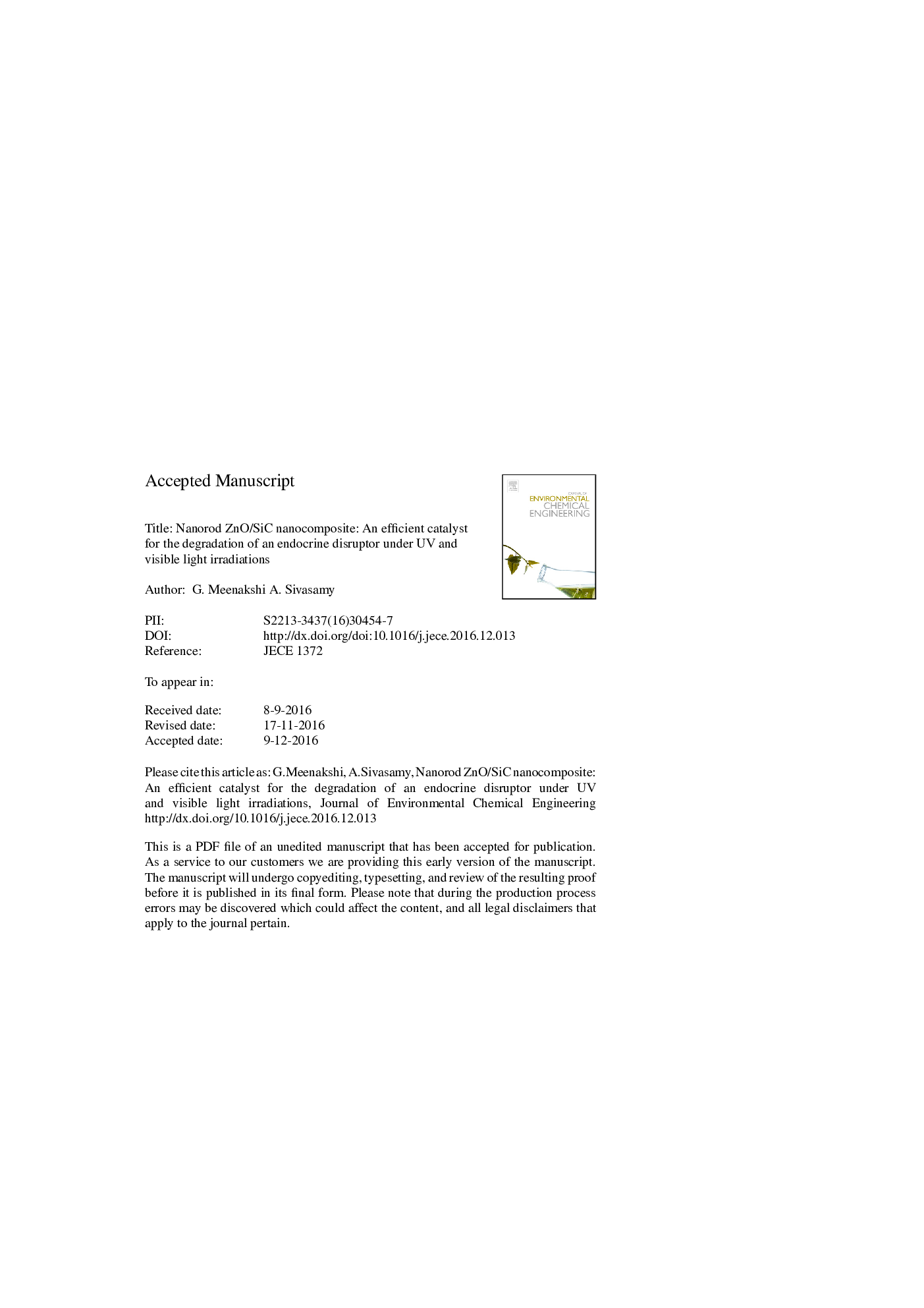| Article ID | Journal | Published Year | Pages | File Type |
|---|---|---|---|---|
| 6663948 | Journal of Environmental Chemical Engineering | 2018 | 31 Pages |
Abstract
Endocrine disruptors (EDCs) are emerging environmental contaminants and highly toxic to the human beings, plants and animals. Heterogeneous photocatalytic oxidations have been received renewed interest due to its efficacy in the degradation of endocrine disruptors such as Diethyl phthalate (DEP) and other toxic organic compounds. Nanorod ZnO/SiC nanocomposite were synthesized by a simple sol-gel method and exhibiting an enhanced UV and visible light photocatalytic efficiencies. The prepared photocatalyst were characterized by UV-DRS, XRD, FT-IR, FE-SEM, EDAX, AFM, HR-TEM, XPS and EPR. The UV-DRS results suggested that the band gap was 3.019Â eV for the prepared photocatalyst. The experimental results proved that the prepared photocatalyst were highly crystalline, nanosized, high roughness, porosity and possess absorption in the UV and visible light regions. Neutral pH was found to be optimum for the effective degradation of the DEP. A catalyst dosage of 5Â mg and 10Â mg/10Â ml resulted in higher percentage of degradation under UV and visible light irradiations respectively. The photo degradation process followed a pseudo first order kinetics and was continuously monitored by UV-vis absorbance measurement and COD analysis. The degradation of DEP was above 90% under UV and visible light irradiations employing nanorod ZnO/SiC nanocomposite as photo catalyst. The stability of the photocatalyst has also been tested its reusability and it was found that upto three cycle of operation the catalyst retain its activity. Hence, the prepared material may find wider applications in environmental remedial technologies to remove the toxic organic and inorganic compounds present in the industrial wastewater.
Related Topics
Physical Sciences and Engineering
Chemical Engineering
Chemical Engineering (General)
Authors
G. Meenakshi, A. Sivasamy,
